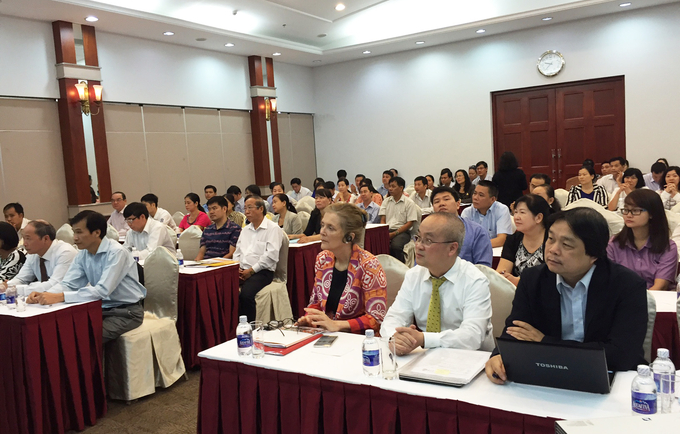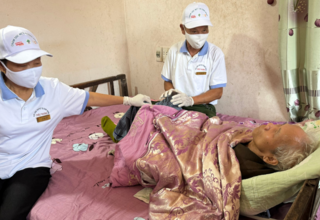Ladies and gentlemen,
A very good morning to you all.
On behalf of the United Nations Population Fund (UNFPA) in Viet Nam, I am very much honored to be here at the workshop on Population and Development in Viet Nam. Let me from the outset thank the MPI's Party Committee for hosting this important event. This is a great opportunity for all of us - policy makers, programmers, development planners and party members to discuss the role and importance of the integration of population variables in the socio-economic development planning of the country at national, local and sectoral levels. This discussion is very timely in the context that Viet Nam is starting to implement the five year socio-economic development plan, 2016-2020. I hope that today’s workshop will help you effectively use demographic data and evidence when planning for the implementation of the SEDP in your respective jobs.
To link population issues and development is at the center of the UNPFA mandate. The Programme of Action of the 1994 International Conference on Population and Development (ICPD) in Cairo, to which Viet Nam is a signatory, emphasized the indissoluble relationship between population and development and called the full integration of population concerns into development strategies, planning, decision-making and resource allocation at all levels and in all regions. This is because population dynamics, including growth rates, age structure, fertility and mortality, migration, etc...influence every aspect of human, social and economic development. Considering population issues seriously in the development process will help the governments foster an equitable, just and sustainable society.
Distinguished guests,
In Viet Nam, data from the population census and surveys show that the country has been undergoing a significant demographic change: decline in fertility and mortality, a rapid and large scale migration process leading to rapid changes in the population distribution between rural and urban areas; and a skewed sex ratio at birth. The country is in the period of demographic bonus with a huge young population, but at the same time, its population is rapidly ageing. In fact, according to the UN World Population Prospects, the old-age dependency ratio (the ratio of older dependents to the working age population) is expected to increase from 9.6 to 21.7 between 2015 and 2035. This demographic change has a huge implication in social protection systems, health sector, labour market, and so on. The government needs to prepare for proactive responses to the population change before it becomes too late.
Let me take the opportunity of this important workshop to highlight three key messages:
First, integration of population dynamics in development planning ultimately helps us address the issue of inequity. Viet Nam has achieved middle-income country status in 2010 and has been very successful in meeting most of MDGs ahead of time. However, wide disparities between urban and rural areas, among geographical areas, and population groups still exist. These disparities are driven largely by population factors. Therefore, more efforts are needed to ensure that the interaction between population and development factors is fully understood and appreciated by all stakeholders including development planners. We believe that under MPI's leadership and coordination, advocacy and communication activities in this regard will be further strengthened at both national and sub-national levels.
Second, There must be commitment and leadership for integrating population variables into socio-economic development planning at all levels. While commitment to integration at the top planning level is a must, it is equally important to generate a similar commitment at the local levels. The commitment should be reflected through institutionalization of integration of population variables into development planning. The Population Ordinance and the National Strategy for Population and Reproductive Health period 2011-2020 emphasize the integration of population into development planning. More efforts are needed to ensure these commitments will be implemented.
Last but not least, having skilled technical people is a crucial factor contributing to the success of planning process. Greater efforts are needed to make sure that, planners and programmers at all levels have up-to-date knowledge and skills on how to use population data for planning development. Modern and evidence-based decision-making process should enable planners to recognize the linkage between rapidly changing population variables and development processes, predict the dynamic impacts on a society and take swift actions to improve the quality of people's life.
Ladies and gentlemen,
UNFPA in Viet Nam very much appreciates the MPI Party Committee’s leadership in support of utilizing population data and evidence for development planning. Building the country's capacity to produce and use reliable and disaggregated data for development planning has long been a priority for UNFPA. Now, with the global attention focused on the Sustainable Development Goals (SDGs) implementation, the availability and utilization of consistent and comparable population information for evidence based planning plays an even more prominent role, not only in planning process but also in the monitoring progress and in the assessment and realignment of national economic development plan, as well as in the achievement of the localized SDGs in Viet Nam. UNFPA is committed to working with you all in this critical endeavour.
Thank you very much for your attention and participation. I wish you all good health, happiness and success.




